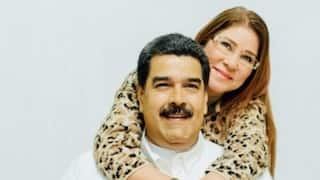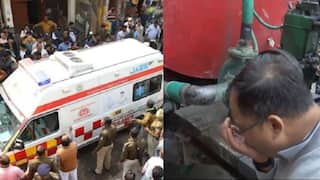Opinion | I-Day 2024: Green Revolution To Liberalisation, How Indian Economy Beat British Battering
In 1947, when India became independent, its GDP was Rs 2.7 lakh crore and population was 34 crore. In 2023, the GDP was around Rs 375 lakh crore and population more than 140 crore.

This year marks 77 years since India became Independent. When the British left India, they left behind an economically weak country, which raised doubts about its ability to remain united. Historical data from Cambridge historian Angus Maddison shows that India’s share in world income declined from 22.6% in 1700 (compared to Europe’s 23.3%) to just 3.8% in 1952.
In the years since, however, the Indian economy has come a long way, taking many turns. India has embraced economic independence and worked towards economic self-reliance. In 1947, when India became independent, its GDP or total income was Rs 2.7 lakh crore and population was 34 crore. In 2023, the country’s GDP was around Rs 375 lakh crore and population more than 140 crore.
Through The Years
Almost at the outset, India established the Indian Institute of Technology (IIT) in 1950 to promote research with the help of foreign institutions, as part of PM Jawaharlal Nehru’s efforts to boost the scientific temper among Indians.
Development goals for the newly independent India were outlined in five-year plans that served as policy road maps for growth.
The first five-year plan, launched in 1951, focused on agriculture and irrigation to boost production as India was losing foreign reserves on foodgrain imports. The second five-year plan, launched in 1956, laid the foundation for economic modernisation to better meet India’s long-term development needs.
In June 1964, Lal Bahadur Shastri encouraged the Green Revolution and White Revolution. The war with China had led to food shortages and rising prices. To remedy it, India needed to focus on agriculture and allow for private enterprise and foreign investment. The Food Corporation of India (FCI) was established in 1965 with the objective of facilitating the Public Distribution System (PDS).
The Green Revolution resulted in record grain production of 131 million tonnes in 1978-79. This established India as one of the largest agricultural producers in the world. During his tenure, Shastri also decided that India had both the capital and capacity to start exporting tea and rubber, besides engineering products and agricultural commodities.
The 1960s were a decade of various economic challenges for India. The devaluation of the rupee had generally pushed up prices. On July 19, 1969, the then Prime Minister and Finance Minister Indira Gandhi decided to nationalise 14 big banks of the country, with the main objective of increasing the credit given by banks to the agricultural sector instead of it going to big businesses alone.
Some reform measures like reducing direct taxes were taken in the Budget of 1985-86. Rajiv Gandhi is widely credited for bringing about the information technology and telecommunication revolution in the country. Rajiv Gandhi’s policies adopted a comprehensive approach in telecommunications, computing and the use of forward-looking technologies.
When P.V. Narasimha Rao took over as Prime Minister in 1991, he announced a new industrial policy that emphasised liberalisation, privatisation, and globalisation, which led to an increase in India’s growth rate, foreign direct investment, and per capita income.
Atal Bihari Vajpayee paid attention to the infrastructure of the country, and the Golden Quadrilateral Scheme was launched to connect Chennai, Kolkata, Delhi and Mumbai through a highway network while strengthening the urban and rural economy through the Pradhan Mantri Gram Sadak Yojana.
During the tenure of Manmohan Singh, the Mahatma Gandhi National Rural Employment Guarantee scheme and the Food Security Act were enacted to strengthen rural employment and safeguard the poor from hunger.
To usher in a new era of economic progress, Prime Minister Narendra Modi replaced the Planning Commission with the NITI (National Institution for Transforming India) Aayog, and the five-year plans were scrapped. Initiatives like Make in India, Skill India, Digital India, and Goods and Services Tax should continue to strengthen the country’s economy.
Indian infrastructure has also improved significantly in the 77 years of Independence. India, once called a ‘third-world country’, is now on course to becoming the third largest economy in the world. The country has now moved from basic infrastructure to ‘multi-modal connectivity infrastructure’. PM Modi personally monitors and reviews the progress of the programmes, changing the red-tape approach.
A Lot Remains To Be Done
While India has progressed a lot since Independence, a lot remains to be done to make it a developed country. Today, we are self-sufficient in agriculture, but the condition of farmers is not very good. It is a great irony that, five decades since India became self-sufficient in foodgrains, two-thirds of the population is dependent on free or subsidised foodgrains provided by the government.
India ranks 132nd out of 191 countries in the United Nations Development Programme’s (UNDP’s) Human Development Index. Despite being the fifth-largest economy, India contributes barely 1.7% to world exports. Economic inequality is also a big issue facing the country: India has added 100 crore more consumers since Independence but most of the purchasing power is limited to a few people. Railways is the largest employer in India, although people still have to struggle to get reserved seats in trains.
There has been significant progress in terms of literacy rate, but the quality of higher education is still a major concern. There is not a single Indian university or institute in the QS World University Rankings’ top 100. The issue of employment generation is also important for the country. The doctor-to-patient ratio is only 0.7 doctors per 1,000 people, while the WHO average is 2.5.
ALSO READ | Modi 3.0: Unemployment To Inflation. Key Economic Challenges Before The Finance Minister
To bridge the rural-urban gap, priority should be given to investment in rural infrastructure, including roads, electrification, health facilities and digital connectivity. The potential of the Indian agritech market is estimated to be $22 billion by 2025, of which we have barely tapped 2%. Development in rural areas should be driven by agro-based industrialisation. Despite the increase in capital expenditure, India’s infrastructure gap is estimated to be around $1.5 trillion, according to the World Bank. Therefore, spending on infrastructure will have to be increased from the current 4%, to 10% of GDP. To realise the dream of making India a $5 trillion economy, the country needs to invest $4.51 trillion in building infrastructure by 2030.
With the largest youth population in the world, India can set new records if its young are equipped with proper skills and education. A lot will depend on the government’s actions as well as people’s desire for change.
Dr. Brajesh Kumar Tiwari is an Associate Professor at Atal School of Management (ABVSME), Jawaharlal Nehru University (JNU), New Delhi.
[Disclaimer: The opinions, beliefs, and views expressed by the various authors and forum participants on this website are personal and do not reflect the opinions, beliefs, and views of ABP News Network Pvt Ltd.]
Related Video
India@2047 Summit: Modi Calls for Innovation, Reforms, and National Resolve






































